
We all know that one of the most supreme and an iconic image of India is the Taj Mahal. It is well known for its delicate minarets, gracefully curved archways and ice cream-scoop domes. Also, one of the eye capturing features is its changing colours at different times of the day, that is, from a pinkish hue in the morning, milky white in the evening and golden at night. Taj Mahal is regarded as the ‘Symbol of Immortal Love’ as it was built by Shah Jahan, the fifth ruler of the Mughal Empire in India, for his favourite wife, Arjumand Banu Begum, popularly known as ‘Mumtaz Mahal’, who was also his third wife. He built the Taj Mahal in her memory after her death in 1631 during the delivery of their fourteenth child. It is a Modern Wonder of the World and is one of the finest examples of the Mughal Architecture. It is estimated that the rich and cultural heritage was built by approximately 22,000 workers, which included the labourers, painters, stonecutters, embroidery artists and so on. The structure of Taj Mahal is such that its four sides are perfectly identical and it took about 17 long years for it to be completed.
The Taj Mahal is located in India, which is the largest country in the Indian subcontinent and South-Asia. Located in the city of Agra, Taj Mahal is about 200kms away from Delhi, which is the capital of India. Agra is a historical city in the heart of Uttar Pradesh. It is one of the important tourism and commercial destinations of the state and is situated between 27°10’N latitude and 78° 2’E longitude.
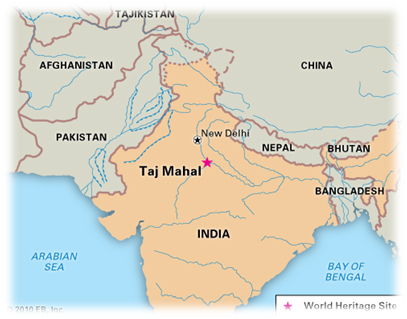
The dimensional structure of the Taj Mahal is broadly classified as:
- The Tomb and the Dome: The tomb is entirely made of white marble. With an arch shaped doorway, the tomb has four minarets around each of the corners. The dome is a cylindrical drum about 7m high. As its shape is somewhat similar to an onion, it is termed as Onion Dome.
- Minarets: They are divided into three parts and are about 40m high. It is strategically structured so that if it fails, it is away from the tomb.
- The Garden: The Garden area of the Taj Mahal is about 300 sq m. The marble water tank in the garden is called ‘The Tank of Abundance’ as it serves the reflection of the tomb.
Hence, overall, the Taj Mahal is about 55m tall, its dome measures about 24m in height and about 8m in diameter.
Taj Mahal, one of the modern wonders of the world, has the following unique characteristics:
- Taj Mahal was designed, executed and completed by the Persian architect named Ustad Isa along with a labour force of about 20,000 workers from across Northern India, which includes sculptors from Bukhara, calligraphers from Syria and Persia, inlayers from Southern India and stone cutters from Baluchistan.
- The total expenditure for constructing the Palace was about three crores.
- It took about 22 years to construct the Palace.
- Taj Mahal was built with pure white marble inlaid with semi-precious stones like jade, crystal, lapis lazuli, amethyst and turquoise.
- It is built on 6.6 m high plinth with a lower portion, square in design.
- It is encompassed with minarets at each of the four corners of the main structure.
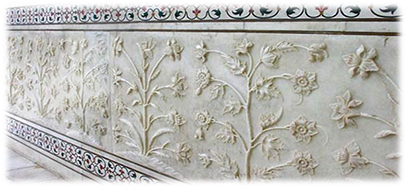
It is believed that Shah Jahan initiated the construction of Taj Mahal after the year of the death of his beloved wife in the year 1631 A.D. The construction began in the year 1632 A.D and was completed after almost 22 years in the year 1654 A.D.
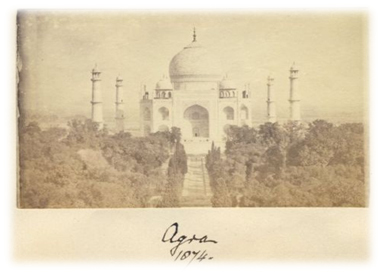
The calmness of the river Yamuna provides a mirror or a shimmer reflection of a ‘floating tomb’. Mumtaz died in the year 1631 A.D and was buried in Burhanpur. After six months, Shah Jahan brought her body back to Agra and buried her at Agra in Taj Mahal. There are important reasons of Taj Mahal being built on the banks of the river Yamuna. According to some, Yamuna is the God of Surya and Yama, that is, Love and Death, and so is Taj Mahal. Hence, banks of Yamuna were chosen to construct the Palace. It is because of the termites in the river of Tapti in Burhanpur that Shah Jahan dropped the idea of building Taj Mahal there. Also, it was built on the banks as it provided water for its construction. During the construction, it became a popular mode of transport as the construction materials were arrived at the Palace by boat.
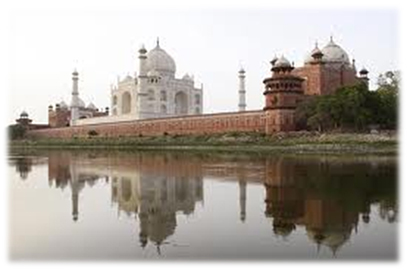
Born on 5 January 1592, Shah Jahan, also called as ‘Prince Khurram’, was the most favourite grandson of Emperor Akbar. At the age of 14, he fell in love with his grandfather’s Chief Minister’s daughter, Arjumand Banu Begum, popularly known as, Mumtaz, who was 15 then. He declared his love for her to his grandfather. However, due certain reasons he could not marry her. At the age of 20 in the year 1612, he married Mumtaz. Although she was his third wife, he had immense love for her and she was his favourite among the others. He was accompanied by her in all his military campaigns. It was during the delivery of their 14th child that Mumtaz lost her life. This made Shah Jahan so heartbroken that he ordered mourning in the court for about two years. He had promised Mumtaz that he would construct the world’s most beautiful monument as the symbol of his immortal love for her and so a year after her death, he began the construction of Taj Mahal. It got completed in the year 1658 A.D. almost after 22 years of the commencement of its construction. When Shah Jahan died in 1966 A.D, his body was placed next to the tomb of Mumtaz Mahal.
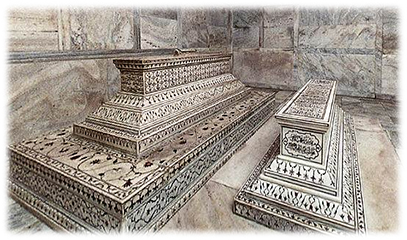
G Kowledge of | 0 Comments >>
0 Comments
Leave Comment
Your email address will not be published. Required fields are marked.